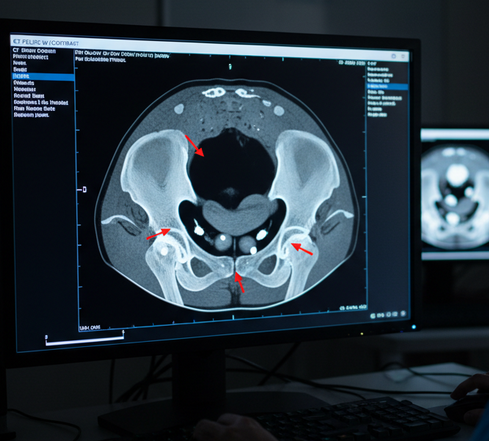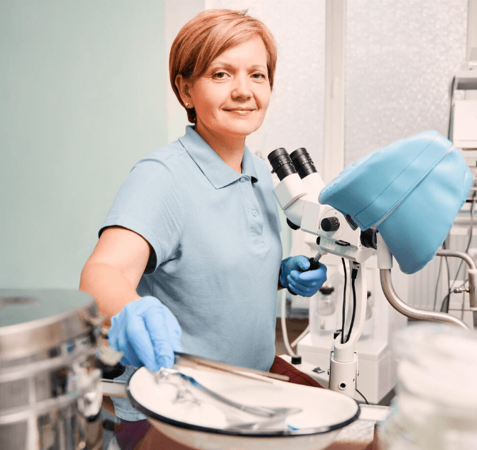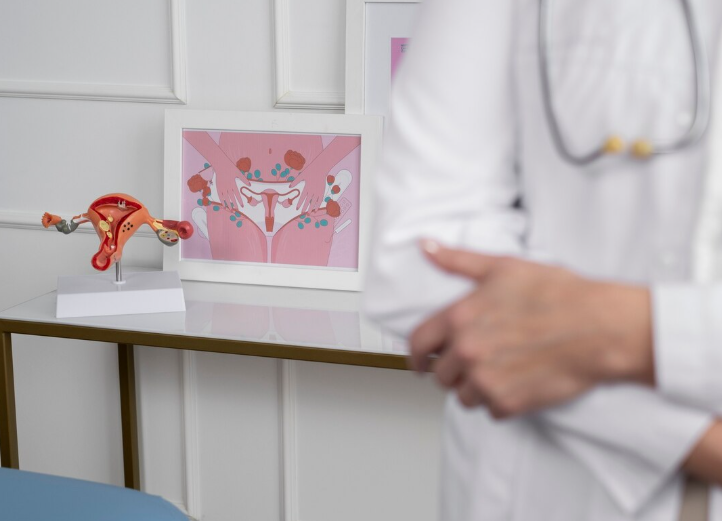Treatment Overview
A CT pelvic scan (computed tomography) is an advanced imaging technique that provides detailed cross-sectional images of the pelvic area, enabling precise evaluation of the structures inside the pelvis. It is particularly valuable for diagnosing the causes of pelvic pain, including gynecologic, urologic, and gastrointestinal conditions.
In Korea, CT pelvic scans are integrated into women’s health care programs to provide accurate diagnostics for pelvic pain. Korean hospitals use the latest multi-slice CT scanners with high resolution and low radiation doses, allowing for faster, safer, and more accurate imaging. The CT pelvic scan is an essential tool in identifying conditions such as ovarian cysts, pelvic inflammatory disease, endometriosis, uterine fibroids, tumors, and other structural abnormalities.
By using this high-tech diagnostic tool, Korean medical centers ensure that treatment plans are tailored to the precise cause of pain, improving outcomes and patient satisfaction.
Purpose & Benefits
The primary purpose of a CT pelvic scan is to accurately locate and evaluate the source of pelvic pain. Benefits of the procedure include:
- High diagnostic accuracy: Detailed imaging enables detection of even subtle abnormalities.
- Non-invasive and quick: The scan takes only a few minutes.
- Comprehensive evaluation: Offers a full view of pelvic organs, surrounding tissues, and vascular structures.
- Early detection: Enables diagnosis of potentially serious conditions at an early stage.
In Korea, CT pelvic scans are often combined with other diagnostic evaluations, such as pelvic ultrasound, MRI, and laboratory testing, for a comprehensive pelvic pain assessment.
Ideal Candidates
A CT pelvic scan is recommended for women who:
- Have persistent or unexplained pelvic pain.
- Experience severe menstrual pain affecting daily activities.
- Suspect structural abnormalities in the uterus, ovaries, or pelvic cavity.
- Have recurrent pelvic infections or inflammation.
- Require preoperative evaluation before gynecologic surgery.
It is also ideal for cases where other diagnostic tools, such as ultrasound, have not provided clear results.
Possible Risks & Complications
CT scans are generally safe, but potential risks include:
- Exposure to a low level of radiation (modern CT scanners in Korea use protocols to minimize exposure).
- Allergic reactions to contrast dye, if used.
- Temporary discomfort or anxiety during the scanning process.
- Rare kidney-related side effects from contrast material in patients with pre-existing kidney conditions.
Korean hospitals adhere to strict safety protocols, ensuring that all patients are screened for risks and that contrast materials are used judiciously.
Techniques Used
In Korea, CT pelvic scans are performed with state-of-the-art multi-detector CT scanners that offer:
- High-resolution imaging for detailed visualization of pelvic structures.
- 3D reconstruction to help doctors view organs and tissues from multiple angles.
- Low-dose radiation technology to ensure patient safety.
- Contrast-enhanced scanning for detailed vascular and tissue evaluation.
These advanced techniques are part of Korea’s broader strategy to provide highly accurate and minimally invasive diagnostic services for women’s health.
Recovery & Aftercare
A CT pelvic scan is non-invasive and requires no significant recovery time. Most patients can resume normal activities immediately after the scan. If contrast dye is used, mild side effects such as warmth or a metallic taste may occur briefly. Patients are advised to drink plenty of fluids to help flush out the contrast material.
Following the scan, the radiologist will analyze the images and send a detailed report to the referring gynecologist. Based on the findings, the doctor will recommend further tests or treatment.
Results & Longevity
CT pelvic scans provide highly reliable results, often revealing the exact cause of pelvic pain with precision. The clarity of the images allows physicians to develop targeted treatment plans that can significantly improve patient outcomes. While the scan itself is diagnostic and not therapeutic, its role in early detection can prevent unnecessary procedures and ensure timely treatment.
Results from CT pelvic scans are permanent medical records, useful for ongoing monitoring and follow-up care.
Treatment Process in Korea
The CT pelvic scan process in Korea is streamlined for patient convenience:
- Initial Consultation: A gynecologist evaluates symptoms and medical history to determine the need for a CT scan.
- Preparation: The patient is given instructions, which may include fasting or avoiding certain medications before the scan.
- Scanning Procedure: The patient lies on the CT table, and a specialized scanner captures detailed images of the pelvic area. Contrast material may be used for enhanced imaging.
- Analysis: Radiologists analyze the images using advanced software and share results with the gynecologist.
- Follow-up Consultation: The patient discusses the findings with the gynecologist, who recommends the appropriate next steps.
Korea is recognized globally for integrating CT pelvic scans into comprehensive women’s health evaluations. Facilities such as Samsung Medical Center, Asan Medical Center, CHA Bundang Women’s Hospital, and Severance Hospital are equipped with advanced imaging technology, making Korea a top destination for pelvic pain evaluation.
Cost Range
The cost of a CT pelvic scan in Korea varies depending on the facility, scan complexity, and use of contrast:
- Standard CT pelvic scan: ₩400,000–₩700,000 KRW ($300–$520 USD).
- Contrast-enhanced CT pelvic scan: ₩600,000–₩1,000,000 KRW ($450–$750 USD).
- Comprehensive pelvic pain diagnostic package (including CT scan): ₩1,200,000–₩2,500,000 KRW ($900–$1,800 USD).
Packages may include additional diagnostic imaging, consultations, and lab tests for a complete assessment.
Popular Clinics in Korea
- Samsung Medical Center — Leading center for advanced CT imaging and women’s health.
- Asan Medical Center — Known for high-tech diagnostic imaging and comprehensive pelvic evaluation.
- CHA Bundang Women’s Hospital — Specializes in gynecologic diagnostics and personalized care.
- Severance Hospital, Yonsei University — Offers cutting-edge CT imaging combined with holistic gynecologic care.
- Kyung Hee University Medical Center — Integrates modern imaging with multidisciplinary diagnostic services.




